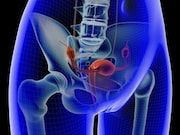Larger genital hiatus tied to higher pelvic organ prolapse risk, regardless of delivery mode
TUESDAY, Dec. 18, 2018 (HealthDay News) — After childbirth, the risk for pelvic floor disorders varies by delivery mode, according to a study published in the Dec. 18 issue of the Journal of the American Medical Association.
Joan L. Blomquist, M.D., from the Greater Baltimore Medical Center, and colleagues annually followed 1,528 women after their first delivery at a community hospital for a median of 5.1 years. Women were categorized by delivery type: cesarean birth group (778 women), spontaneous vaginal birth group (565 women), and operative vaginal birth group (185 women).
The researchers noted 138 cases of stress urinary incontinence (SUI), 117 cases of overactive bladder (OAB), 168 cases of anal incontinence (AI), and 153 cases of pelvic organ prolapse (POP). Among women with spontaneous vaginal delivery, the 15-year cumulative incidences of pelvic floor disorders after first delivery were: SUI, 34.3 percent; OAB, 21.8 percent; AI, 30.6 percent; and POP, 30.0 percent. Cesarean delivery was associated with a significantly lower hazard of SUI (adjusted hazard ratio [aHR], 0.46), OAB (aHR, 0.51), and POP (aHR, 0.28), while operative vaginal delivery was associated with a significantly higher hazard of AI (aHR, 1.75) and POP (aHR, 1.88) compared with spontaneous vaginal delivery. The hazard ratios for POP were 3.0 for a genital hiatus size of 3 cm and 9.0 for a genital hiatus size of ≥3.5 cm compared with a genital hiatus size of ≤2.5 cm.
“Results of this study showed a substantial difference in pelvic floor disorder incidence based on a woman’s obstetrical characteristics,” the authors write.
Copyright © 2018 HealthDay. All rights reserved.








